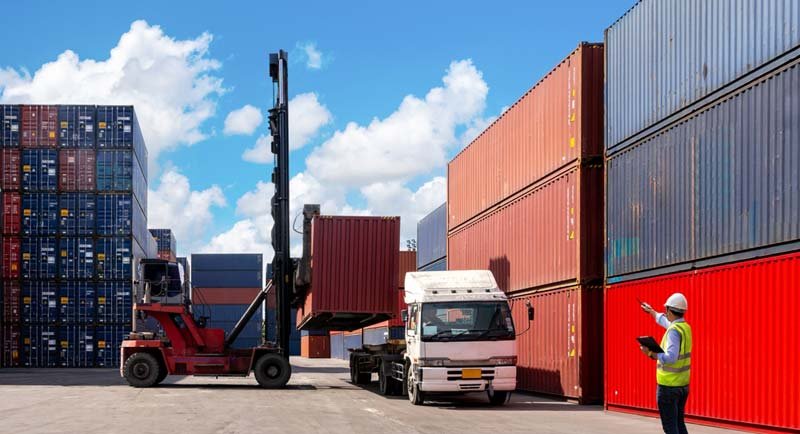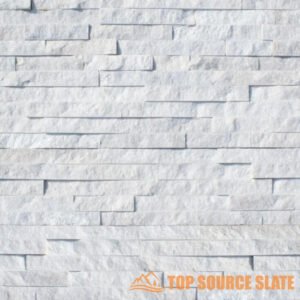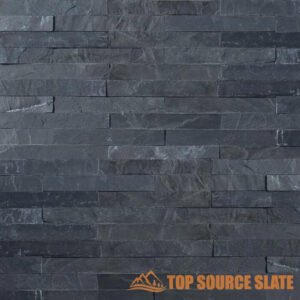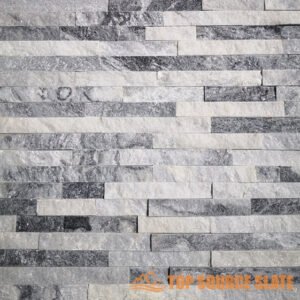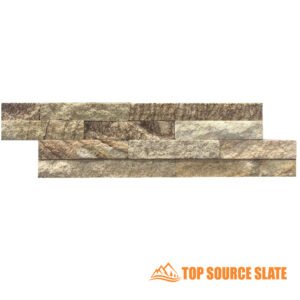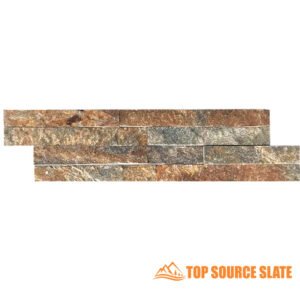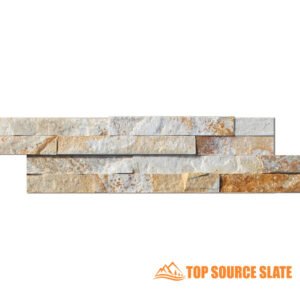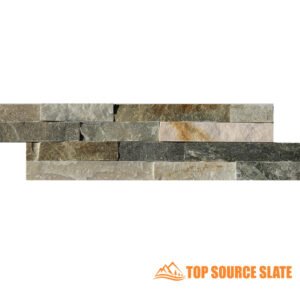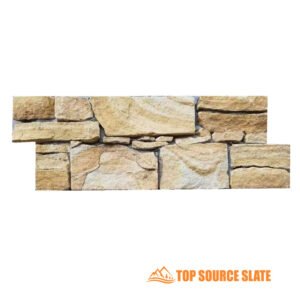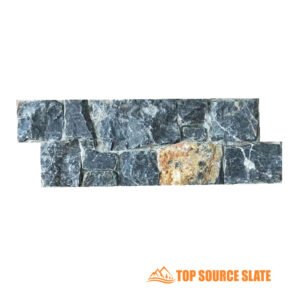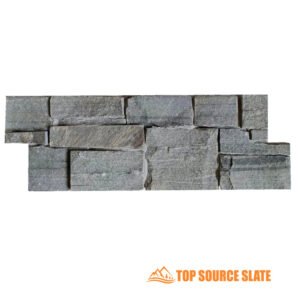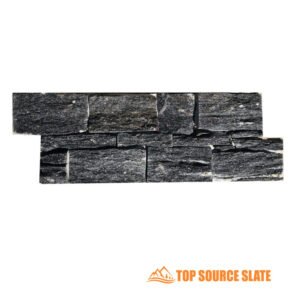The beauty and versatility of natural stacked stones have made them increasingly popular in architectural and interior design projects worldwide. Whether you’re enhancing the facade of a building, creating a stunning fireplace, or adding a touch of rustic charm to an interior space, natural stacked stones are a go-to choice for many designers and builders.
China, as one of the largest producers and exporters of natural stacked stones, offers a wide array of options to meet various design needs. However, importing these panels can be a complex process, especially for those unfamiliar with international trade. This comprehensive guide will navigate you through the steps of importing natural stacked stone from China, ensuring a smooth process from sourcing to delivery.
Understanding Natural Stacked Stone
The first step in the preparation process is to clearly define what you need. natural stacked stones come in various types, sizes, colors, and finishes, so it’s essential to know exactly what you’re looking for.
Type of Natural Stacked Stone Panels:
- Stacked Stone Tile: Ideal for both interior and exterior applications, natural stacked stone ledger panels are versatile and can be used for walls, fireplaces, and other decorative features.
- Split Face Wall Tiles: A thinner option, a natural stacked stone veneer is perfect for projects that require a lightweight solution without compromising on the natural stone look.
- Ledgestone Wall Cladding: These are pre-assembled panels that simplify the installation process, making them a popular choice for large-scale projects.
- Crazy Paving Flagstone: they are irregularly shaped stones in sandstone, slate, and quartzite, and a very cost-effective way to create a different look for flooring and walling with outstanding quality, the best value, excellent customer service, and short lead times.
Size and Thickness:
- Standard sizes are typically 6×24 inches, but custom sizes are often available.
- Thickness can vary, usually between 1-2 inches, depending on the application. Thicker panels are more suitable for exterior use, such as ledgestone wall cladding, due to their increased durability.
Color and Finish:
- Colors: natural stacked stone panels come in a wide range of colors, including beige, black, rustic brown, grey, and more. The color should complement the overall design of the project.
- Finish: The finish of the stone can vary from a natural, rough texture to a more polished look. Consider whether you want a rustic appearance for a country stacked stone style or a sleek, modern look for an indoor stacked stone backsplash.
| Specification | Options |
|---|---|
| Type | Stacked Stone Tile, Ledge Stone Veneer, Stacked Stone Panels |
| Size | Standard: 6×24 inches; Custom sizes available |
| Thickness | 1-2 inches |
| Color | Beige, Black, Rustic Brown, Grey, White, etc. |
| Finish | Natural, Rough, Polished |
| Application | Fireplaces, Accent Walls, Facades, Backsplashes |
Stacked Stone: A Complete Buyer’s Guide【update】
How to Install Stacked Stone or Ledge Stone
How to Install a Stacked Stone Fireplace
Applications of Natural Stacked Stone
Natural stacked stone is a versatile material that can enhance various architectural and landscaping projects. Its unique textures, colors, and durability make it suitable for numerous applications. Here are some popular uses of natural stacked stone:
1. Exterior Facades
Natural stacked stone backsplash is often used to create a stunning stacked stone facade exterior for residential and commercial buildings. The stone’s rustic charm and timeless appeal add significant value and aesthetic interest.
- Design Flexibility: Stacked stone can be employed in various styles, from contemporary to traditional, allowing architects and designers to create unique looks.
- Durability: It withstands harsh weather conditions, making it an ideal choice for exterior applications. The natural resistance to fading and degradation ensures long-lasting beauty.
- Energy Efficiency: Stone facades can contribute to improved insulation, helping regulate indoor temperatures and reduce energy costs.
2. Landscaping Features
In landscaping, natural stacked stone provides both functionality and visual appeal. It can be used to construct various outdoor features, enhancing gardens and outdoor spaces.
- Retaining Walls: Stacked stone is ideal for building retaining walls that prevent soil erosion and support garden beds. Their natural appearance blends seamlessly with outdoor environments.
- Garden Pathways: Creating walkways and paths using stacked stone offers durability and an organic look. The stones can be arranged in various patterns to enhance the landscape’s aesthetic.
- Water Features: Incorporating natural stacked stone into water features, such as ponds or fountains, adds a natural touch and enhances the tranquility of outdoor spaces.
3. Fireplaces
Natural stacked stone tile is a popular choice for constructing fireplaces, adding warmth and elegance to indoor spaces.
- Visual Appeal: The unique textures and colors of stacked stone can create a stunning focal point in living rooms or outdoor patios, enhancing the overall ambiance.
- Heat Resistance: Stone is naturally heat-resistant, making it a safe option for fireplace construction. It can withstand high temperatures without compromising structural integrity.
- Customization: Homeowners can customize the design of their fireplaces using different stone types and arrangements to match their interior decor.
4. Accent Walls
Creating accent walls using natural stacked stone veneer is an effective way to add depth and character to interior spaces.
- Focal Points: An accent wall can serve as a striking focal point in rooms such as living rooms, dining areas, or entryways. The texture of the stone draws attention and adds dimension.
- Versatile Design: Stacked stone can be paired with various color schemes and furniture styles, making it a versatile choice for interior design. Homeowners can choose stones that complement their existing decor.
- Sound Absorption: Natural stone can help reduce noise levels within a space, making it an ideal choice for busy areas or homes located in noisy environments.
5. Outdoor Living Spaces
Incorporating natural stacked stone veneer panels into outdoor living areas can elevate the design and functionality of patios, decks, and outdoor kitchens.
- Outdoor Kitchens: Stacked stone can be used to construct outdoor kitchens or barbecues, providing a durable and aesthetically pleasing surface for cooking and entertaining.
- Fire Pits: Building fire pits with natural stacked stone creates a cozy gathering spot for outdoor entertainment. The stone’s heat resistance makes it a practical choice for this application.
- Seating Areas: Utilizing stacked stone for seating walls or benches adds an inviting touch to patios and garden areas, providing both functionality and beauty.
6. Commercial Spaces
Natural stacked stone is not limited to residential applications; it is also widely used in commercial spaces to create impactful designs.
- Retail Environments: Many retailers use natural stone stacked tile in their storefronts or interior design to convey a sense of authenticity and quality, attracting customers.
- Hospitality Industry: Restaurants, hotels, and resorts often incorporate natural stone into their designs to create a welcoming atmosphere that reflects nature.
- Corporate Offices: Stacked stone can enhance the aesthetics of corporate offices, lobbies, and conference rooms, contributing to a sophisticated and professional environment.
How To Select Stacked Stone Tiles For Your Project
Top 5 Best Stacked Stone Tiles for Fireplaces
10 Good Reasons for Stacked Stone Veneer Panels
Why Import natural stacked stones from China?
China is a global leader in the production of natural stacked stones, offering a unique combination of variety, quality, and affordability. Here’s why sourcing from China makes sense:
- Variety and Quality: Chinese manufacturers offer a wide range of natural stacked stones panels, including ledger stone tiles, natural stacked stones veneers, and natural stone ledger panels. These products are available in various colors, textures, and finishes, allowing you to find the perfect match for any project. The quality of these panels is maintained through strict adherence to international standards, ensuring that you receive durable and aesthetically pleasing products.
- Competitive Pricing: One of the most compelling reasons to import from China is the cost advantage. Due to lower labor costs and efficient manufacturing processes, Chinese suppliers can offer natural stacked stones panels at prices that are significantly lower than those in Western markets. This cost savings can be a significant factor, especially when dealing with large-scale projects.
- Advanced Manufacturing Capabilities: Over the years, Chinese factories have invested heavily in modern equipment and technology. This investment has enabled them to produce high-quality stacked stone ledger panels and slate ledger stones with precision and consistency. The availability of advanced machinery also means that these factories can handle large orders efficiently, reducing lead times.
- Global Export Experience: Chinese manufacturers are well-versed in exporting their products to various parts of the world. This experience means they understand the requirements and preferences of different markets, particularly in North America and Europe. They are also familiar with international shipping and customs procedures, which can simplify the import process for you.
Researching and Selecting Suppliers
Finding Reliable Natural Stacked Stones Manufacturers
Sourcing high-quality manufactured stacked stone veneer begins with identifying reputable manufacturers. Here’s how to effectively find and evaluate suppliers:
- Online Sourcing Platforms: Utilize platforms such as Alibaba, Made-in-China, and Global Sources, which feature many suppliers. These platforms allow you to filter search results based on product categories, ratings, and customer feedback.
- Supplier Verification: Look for suppliers that the platform has verified. Many websites offer badges indicating that the supplier has undergone a verification process, which can provide additional peace of mind.
- Trade Shows and Expos: Attending trade shows related to building materials can provide valuable opportunities to meet suppliers face-to-face. Events like the Canton Fair in China showcase numerous manufacturers, allowing you to inspect products and establish relationships directly.
- Referrals and Recommendations: Seek referrals from industry contacts, colleagues, or business associations. Personal recommendations can lead to trustworthy suppliers and facilitate smoother transactions.
Here are some of the trade fairs where you can find China kitchen tiles, floor tiles, porcelain tiles, ceramic tiles, marble tiles, mosaic tiles, stone-coated roofing tiles, ceramic wall tiles, bathroom tiles, and more in China.
| Trade Fair | Location | Date |
|---|---|---|
| China International Ceramic and Bathroom Fair | Foshan International Conference & Exhibition Center | April 18 – 21, 2021 |
| Ceramics China Fair | China Import and Export Fair Pazhou Complex | June 22 – 25, 2021 |
| Rooftile China | China Import and Export Complex – Canton Fair Complex | May 10 – 12, 2021 |
| Ceramics, Tile & Sanitary Ware Expo | Shanghai New International Expo Centre | March 29 – April 1, 2021 |
| Shanghai International | Shanghai World Expo | May 23 – 25, 2021 |
| Advanced Ceramics Exhibition & Conference | Exhibition and Convention Center | |
| DOMOTEX Asia/ China Floor | National Exhibition and Convention Center ,Shanghai | May 25 – 27, 2022 |
| China Xiamen International Stone Fair | Xiamen International Conference & Exhibition Center, Xiamen, China | May 18 – 21, 2021 |
Evaluating Supplier Capabilities
Once you’ve identified potential suppliers, it’s essential to assess their capabilities to ensure they can meet your needs:
- Production Capacity: Inquire about the supplier’s production capacity. Understanding their output capabilities will help you determine if they can fulfill your order volume within your desired timeframe.
- Quality Control Processes: Ask about the quality assurance measures they have in place. Suppliers should have strict quality control processes, including in-house inspections and compliance with international standards.
- Experience and Expertise: Evaluate the supplier’s experience in the natural stone industry. A well-established supplier with a track record of successful exports is more likely to understand the nuances of international shipping and customs regulations.
- Sample Requests: Always request samples before placing a bulk order. This allows you to assess the stone’s quality, texture, and finish firsthand, ensuring it meets your specifications.
Understanding Import Regulations and Requirements
Customs Regulations
Navigating customs regulations is a critical part of the import process. Here are the key aspects you need to consider:
- Documentation Requirements: Ensure you have all necessary documentation prepared for customs clearance, including:
- Commercial Invoice: A detailed bill of sale outlining the transaction, including item descriptions, quantities, and prices.
- Packing List: A comprehensive list detailing the contents of the shipment, including item dimensions and weights.
- Bill of Lading: A legal document between the shipper and carrier, acting as a receipt for the goods and a contract for transportation.
- Certificates of Origin: Documentation certifying the country of manufacture, which may be required to assess duties and taxes.
- Import Permits: Depending on the destination country, you may need specific import permits for natural stone. Check with local authorities to ensure compliance with any regulations that apply to slate stacked stone tile products.
Import Duties and Taxes
Understanding the financial implications of importing natural stacked stone is crucial for effective budgeting and financial planning. Import duties and taxes can significantly impact the overall cost of your shipment. Here’s a detailed breakdown of what you need to know:
1. Harmonized Tariff Schedule (HTS)
The Harmonized Tariff Schedule (HTS) is a globally standardized system that classifies traded products. Understanding how to navigate the HTS is vital for determining the applicable duties on imported goods.
- Product Classification: Each product is assigned a specific HTS code based on its material composition, use, and characteristics. For natural stacked stones, you’ll need to find the correct HTS code that corresponds to the type of stone you are importing.
- Researching HTS Codes: You can find HTS codes on the website of your country’s customs authority. In the United States, for example, the U.S. International Trade Commission (USITC) provides an online database where you can search for relevant codes.
- Duty Rates: Each HTS code has an associated duty rate, which indicates the percentage of the product’s value that must be paid as a tax upon import. These rates can vary significantly based on the type of stone, origin, and trade agreements in place.
Natural stacked stone HS code: 68030090
2. Calculating Import Duties
To accurately estimate your import duties, follow these steps:
- Determine Customs Value: The customs value is typically based on the total invoice amount, including the cost of the stone, shipping fees, and insurance. Ensure that you have a clear understanding of all costs involved in your purchase.
- Apply the Duty Rate: Once you have determined the customs value, multiply this amount by the applicable duty rate to calculate your import duties. For example, if the customs value of your shipment is $10,000 and the duty rate is 5%, your import duties would amount to $500.
- Additional Fees: Be aware that other fees may apply, such as processing fees, harbor maintenance fees, or delivery charges. These can vary by jurisdiction and should be factored into your overall cost.
3. Value-Added Tax (VAT) or Goods and Services Tax (GST)
In addition to import duties, many countries impose a Value-Added Tax (VAT) or Goods and Services Tax (GST) on imported goods:
- Tax Rate: The VAT/GST rate varies by country and is typically a percentage of the customs value plus any applicable import duties. For example, if your customs value is $10,000 and your import duties are $500, the taxable amount for VAT might be $10,500.
- Compliance: Ensure you comply with local tax regulations when importing natural stacked stone. It’s essential to understand how these taxes are calculated and applied in your jurisdiction to avoid unexpected costs.
4. Customs Clearance Process
Navigating the customs clearance process can be complex, and understanding your responsibilities is critical:
- Customs Declaration: When your shipment arrives, you’ll need to submit a customs declaration that includes all required documentation, such as the commercial invoice, packing list, and bills of lading. Accurate and complete information is vital to avoid delays.
- Working with Customs Brokers: Many importers choose to work with customs brokers who specialize in handling the complexities of customs clearance. Brokers can assist in filing the necessary paperwork, calculating duties, and ensuring compliance with all regulations.
- Possible Inspections: Be prepared for the possibility of customs inspections, where authorities may examine your shipment to ensure it complies with regulations. Having all documentation in order will help expedite this process.
5. Tariff Exemptions and Trade Agreements
Understanding available tariff exemptions and trade agreements can help reduce your import costs:
- Free Trade Agreements (FTAs): Investigate whether your country has any FTAs with China that could lower or eliminate import duties for natural stacked stone. Such agreements can significantly enhance the competitiveness of your imported products.
- Special Tariff Programs: Some countries have programs that offer reduced tariffs for certain products or for goods sourced from specific regions. Research these options to see if they apply to your situation.
6. Record-Keeping and Compliance
Maintaining accurate records of your import transactions is essential for compliance and future reference:
- Documentation Management: Keep organized records of all invoices, shipping documents, customs declarations, and payment receipts. These documents will be important for audits or disputes.
- Monitoring Changes: Stay informed about changes in tariff rates, import regulations, and trade policies that could impact your future imports. Regularly checking updates from customs authorities will help you remain compliant.
By thoroughly understanding import duties and taxes associated with importing natural stacked stone from China, you can make informed decisions, accurately budget your project, and ensure a smoother import process. This knowledge will help you avoid unexpected costs and improve your overall importing experience.
What is HIGH QUALITY ledge stones?
Packaging Method of Stacked Stone for exporting
Ledgestone Panel 6″ x 24″ Package Process
The Import Process, Shipping and Logistics
Understanding the logistics of shipping is crucial for a smooth import experience. Here’s what you need to know:
Placing Orders
Placing orders effectively is crucial for a successful import experience. Here’s how to navigate this phase:
- Negotiating Prices and Terms: Be open about your budget and negotiate prices with suppliers. Establish clear payment terms, such as a deposit upfront with the balance due upon shipment.
- Using a Letter of Credit: To protect both parties in the transaction, consider using a Letter of Credit (L/C). This financial instrument ensures that the seller receives payment only after fulfilling their obligations, such as shipping the goods as specified.
- Clear Specifications: Provide detailed specifications for your order. This includes dimensions, finishes, color preferences, and any specific requirements unique to your project. Clarity reduces the risk of misunderstandings.
Shipping Options and Incoterms:
- FOB (Free on Board): This is one of the most commonly used Incoterms in international trade. With FOB, the supplier is responsible for delivering the goods to the port and loading them onto the shipping vessel. After that, the buyer assumes responsibility, including the cost and risk of shipping.
- CIF (Cost, Insurance, and Freight): Under CIF, the supplier covers the cost of the goods, insurance, and freight to the port of destination. However, the buyer takes over the risk once the goods are on the vessel. This option is more convenient for buyers who prefer the supplier to handle most of the shipping logistics.
- EXW (Ex Works): With EXW, the buyer is responsible for all costs and risks from the moment the goods leave the supplier’s factory. This option gives the buyer full control over the shipping process but requires more effort in arranging transportation.
Choosing a Shipping Method:
- Container Shipping: Given the weight and volume of natural stacked stone panels, container shipping is typically the best option. You can choose between a Full Container Load (FCL) or a Less than Container Load (LCL) depending on the quantity.
- Air Freight: While more expensive, air freight is faster and might be suitable for smaller, time-sensitive orders. However, due to the weight of stone products, this method is rarely used for natural stacked stones panels.
- Consolidated Shipping: If your order doesn’t fill an entire container, you can opt for consolidated shipping, where your goods share container space with other shipments. This can reduce costs but might extend delivery times.
Table: Shipping Methods Overview
| Shipping Method | Pros | Cons |
|---|---|---|
| FOB | Lower cost, control over shipping | Buyer assumes risk after goods are loaded |
| CIF | Convenience, supplier handles shipping and insurance | Higher cost, buyer takes over risk mid-journey |
| EXW | Full control over logistics | More responsibility, potential for higher costs |
| Container Shipping (FCL/LCL) | Economical for large orders, secure | Longer transit times, potential for delays |
| Air Freight | Fast, suitable for small orders | Expensive, limited by weight considerations |
| Consolidated Shipping | Cost-effective for small shipments | Potential delays due to multiple consignments |
Packaging and Protection:
- Packaging: Proper packaging is essential to prevent damage during transit. natural stacked stone panels are typically packed in wooden crates or pallets, with foam or protective layers between the panels to avoid scratches or breakage.
- Labeling: Ensure that each crate or pallet is properly labeled with your company name, the product details, and the destination address. This will help in easy identification during customs clearance and delivery.
- Insurance: While CIF includes insurance, if you’re using FOB or EXW, it’s advisable to purchase marine insurance to cover potential losses during transit.


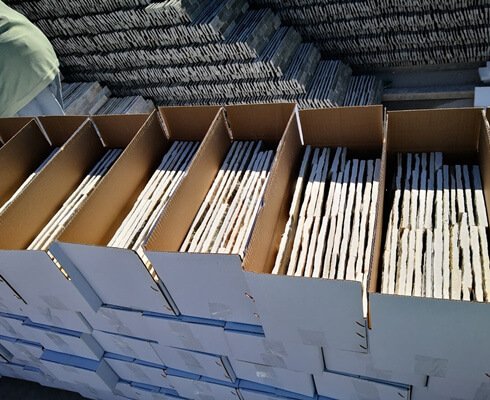



Calculating Shipping Costs:
- Freight Charges: These are calculated based on the weight and volume of the shipment. The size of the container and the shipping method will significantly influence the cost.
- Port Charges: Once the shipment arrives at the destination port, there are additional charges such as unloading fees, customs fees, and storage fees if the goods aren’t cleared immediately.
- Delivery to Final Destination: After customs clearance, you’ll need to arrange for the goods to be delivered to your site. This can be done through a local logistics provider.
Tracking Shipments
Once your order is shipped, monitoring the shipment’s progress is crucial:
- Tracking Information: Obtain tracking information from your freight forwarder to stay informed about the shipment’s status.
- Communication with Suppliers: Maintain open lines of communication with your supplier and freight forwarder to quickly address any issues that arise during transit, such as delays or customs inquiries.
By thoroughly researching suppliers, understanding import regulations, and effectively navigating the import process, you can streamline your experience and ensure a successful import of natural stacked stone from China.
Quality Control and Inspection
Ensuring the quality of stacked stone veneer tile before it reaches your hands is vital to avoiding costly mistakes and ensuring customer satisfaction. Here’s a detailed approach to implementing effective quality control measures and conducting inspections.
Pre-shipment Inspection
A pre-shipment inspection is a critical step in the importing process. It helps confirm that the products meet your specifications and quality standards before they leave the supplier’s facility.
- Importance of Pre-shipment Inspections: Conducting inspections can help identify any defects, mismatches, or quality issues before shipment. This proactive measure can save you time and money in the long run by minimizing returns and reordering.
- Selecting Inspection Services: Choose a reputable third-party inspection service that specializes in building materials. Services like SGS, Bureau Veritas, or local companies in China can provide comprehensive inspections. Ensure that they have experience with natural stone products.
- Inspection Criteria: Establish clear criteria for the inspection process. Key factors to assess include:
- Color Consistency: Verify that the colors of the stones match your order specifications. Natural stone can vary, so ensure the samples align with your expectations.
- Size Accuracy: Check that the dimensions of each stone meet your specified requirements. This is crucial for proper installation and aesthetic appeal.
- Finish Quality: Inspect the surface finish of the stones. Look for any defects, such as scratches, chips, or uneven surfaces, that could affect the stone’s overall appearance.
- Weight and Thickness: For certain applications, the weight and thickness of the stone can be critical. Make sure they conform to your specifications.
How To Inspect Ledge Stone Products Before Exporting?
How to load stacked stones in a container for exporting?
Excellent services after placing orders
Handling Quality Issues
Despite thorough inspections, there may still be instances where products do not meet expectations upon arrival. Having a clear plan for handling quality issues is essential.
- Documentation of Issues: If there are quality concerns, document the issues thoroughly. Take clear photographs of any damage or discrepancies. This evidence will be crucial when communicating with the supplier.
- Communication with Suppliers: Promptly reach out to your supplier to address any quality issues. Use the documentation you’ve gathered to explain the situation clearly. Most reputable suppliers will be willing to work with you to resolve problems, whether that means issuing a refund, providing replacements, or adjusting future orders.
- Return Policies and Warranty Terms: Before placing your order, discuss and understand the supplier’s return policies and warranty terms. Knowing these details in advance will help you navigate any potential issues more effectively. Be clear about what circumstances warrant a return or replacement and the timeframe for addressing these claims.
- Future Preventive Measures: After resolving any quality issues, consider implementing lessons learned into future orders. This could include adjusting specifications, refining inspection criteria, or even switching suppliers if necessary. Maintaining a proactive approach will improve your overall importing experience.
By prioritizing quality control and thorough inspections, you can significantly reduce the risk of issues arising after your natural stacked stone is imported. This diligence not only protects your investment but also enhances your reputation with customers and stakeholders.
Conclusion
Importing natural stacked stone from China can be a straightforward process when approached with careful planning and thorough research. By understanding supplier selection, navigating regulations, and implementing quality control measures, you can successfully import beautiful and durable natural stones for your projects.
We have more than 18 years of export experience and offer samples before order placement.
If you need more help or would like to discuss something customized, please contact us anytime.
And would love to share our expertise to help you too!

